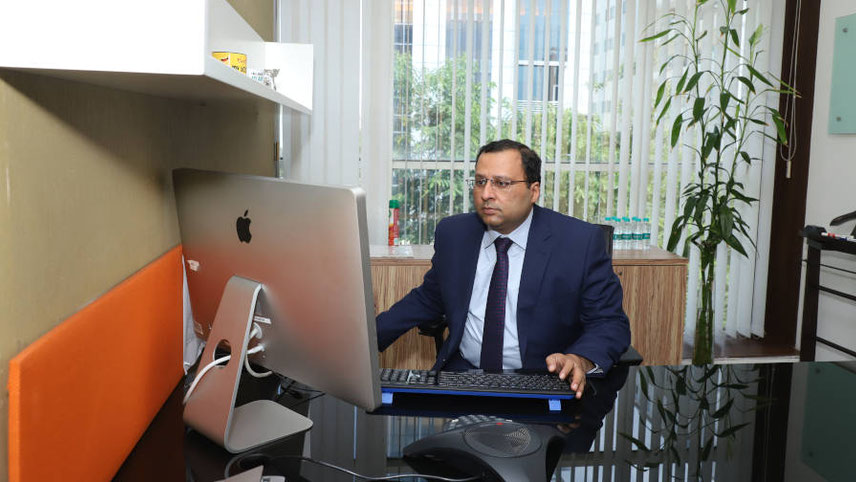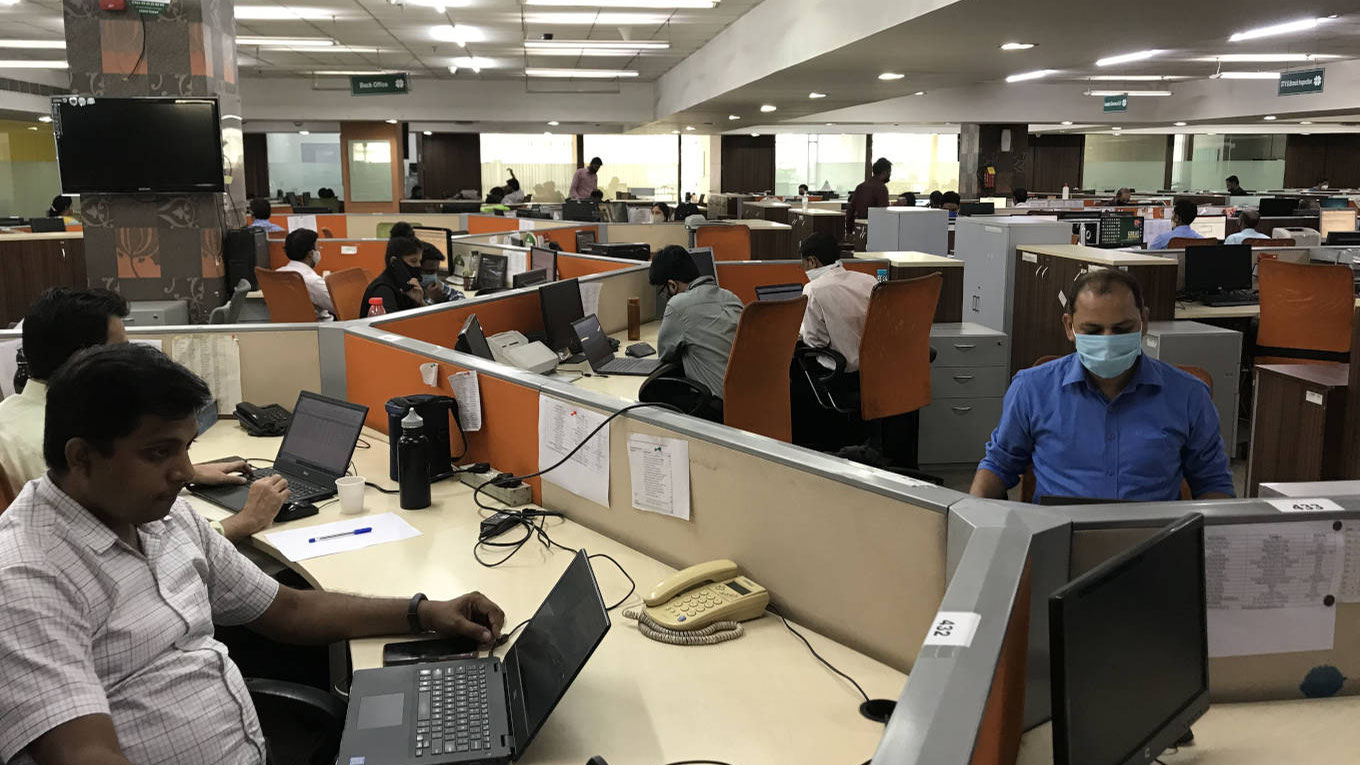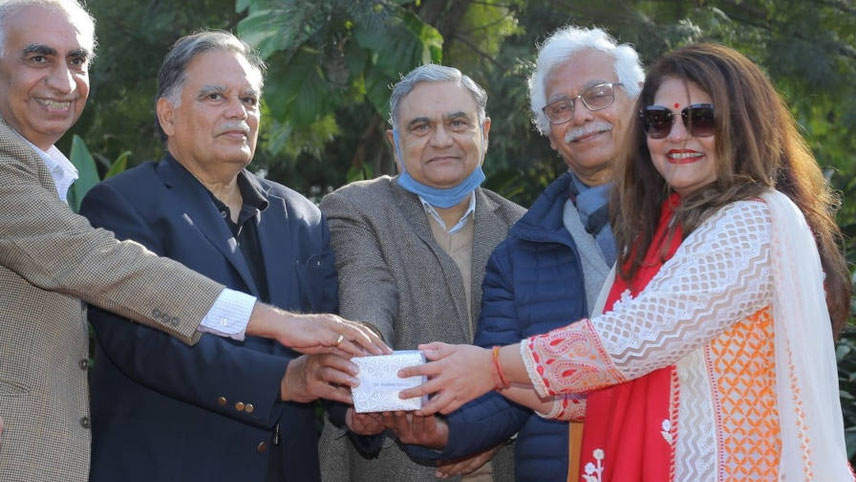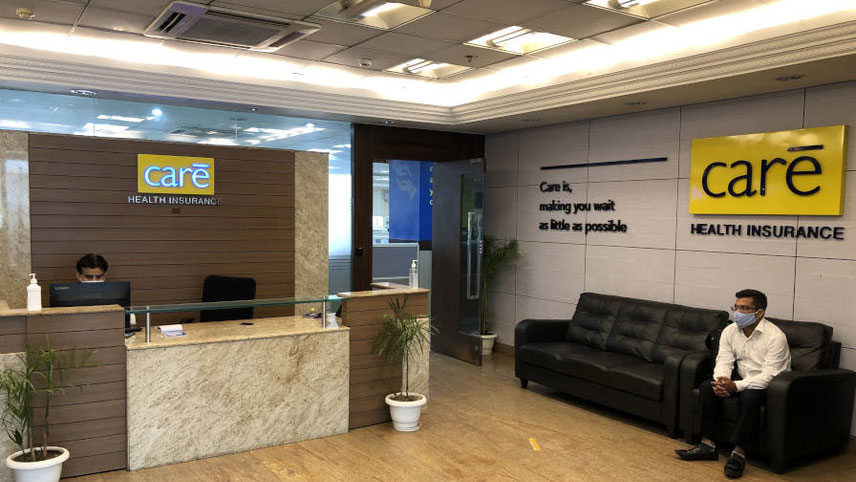-

Agarwal: the family has siphoned off close to Rs5,000 crore
However, after the charges were levelled against the Singh brothers leading to their ouster from the REL Board in February 2018, the shareholders had put together an independent board to weigh various options. The board comprised some noted names from different spheres including former senior bureaucrats and bankers.
The members of the current board include: Malay Kumar Sinha, ex-joint secretary in the Ministry of External Affairs; Vijayalakshmi Iyer, Ex-CMD of Bank of India and ex-member of Insurance Regulatory and Development Authority (IRDA); Siddharth Dinesh Mehta, Founder and CIO of Bay Capital; Dr Vijay Shankar Madan, former Director General of UIDAI (Aadhaar) and Hamid Ahmed, Chancellor of Jamia Hamdard. Executive Chairperson Saluja is a practising senior doctor and has also been founder Trustee of Citizens Development Foundation, known for its social and charitable activities.
“The mess was grave and we had two ways. Either we let it go to the debt recovery tribunal or we try to revive. But with the support of shareholders and lending institutions, we eventually decided to turn it into a new company,” says Saluja. SBI, Bank of India, Bank of Baroda, Canara and PNB have been the major banking agencies lending to REL.
Explaining the chain of events which eventually put the company on a recovery course, an internal REL note cites the directive issued by the Reserve Bank of India (RBI) in its letter issued in January, 2018, asking RFL to adhere to the Corrective Action Plan (RBI CAP) as the preliminary step. In a practical sense, it entailed prohibiting RFL from further expansion of credit portfolios.
The past wrongdoings of the erstwhile promoter group and ex-management resulted in the siphoning of Rs2,037 crore through Corporate Loan Book (CLB) transactions, which came to light through forensic audits, various RBI reports and SEBI investigations. The other financial challenges faced by RFL, included misappropriation of Rs791 crore of RFL’s Fixed Deposit by Laxmi Vilas Bank (LVB) and other non-core (non-SME) investments done by RFL’s ex-management.
“Forensic audits, filing of legal proceedings for recovery of CLB funds, submission of criminal complaints and evidences to investigating agencies, expediting collections and recovery efforts, sale of NPAs to Asset Reconstruction Companies (ARCs), resolving other legacy issues and putting in place systems and controls for responsible corporate governance are some of the key steps taken for the revival of RFL in the last three years,” points out Mayur Dwivedi, Head – Strategy and Investor Relations, of the company.
The new management at Religare has also upped the ante against original promoters leading to a fresh development this June wherein the board got the approval of both the stock exchanges, NSE and BSE, for reclassification of the erstwhile promoters and promoter group into the public category. And as per the new classification, REL has now become a ‘listed entity with no promoters’.
“We are diligently following the cases we had filed against them. Those complaints have been investigated and charge sheets have also been filed in some of them. We are quite hopeful of eventually making a good recovery at some stage,” says Agarwal.
REL, interestingly, was on the verge of selling off its NBFC and housing businesses to TCG Advisory of Purnendu Chatterjee in 2019-20. It had signed a Share Purchase Agreement (SPA) in October to this effect as part of its Debt Restructuring effort. However, in March 2020 RBI red flagged the deal saying TCG was not the right fit and it had changed the entire revival course.
“When TCG did not work out, we had a lot of suitors including MNCs who were ready to take over RFL at good valuation because changes at the management level had started becoming visible. But we decided to hold back because by that time, we had done most of the cleaning. We had started the recovery process and begun pursuing legal cases,” Saluja adds while emphasising that the TCG deal failure in hindsight was not as big a setback as many had believed then.
-

Insurance business is the jewel in REL’s crown
Insurance shield
The company has managed to repay more than Rs6,450 crore to its lenders since January 2018 and this is being dubbed as a major confidence building point for the beleaguered entity. “It’s mostly on the basis of servicing of existing loans which were given out in the pre-crisis period. The loan book of RFL in 2016 was close to Rs17,000 crore which slowed down in the following year after the surfacing of the crisis in 2017,” Agarwal adds.
A former senior employee of the company (spoke to us on the assurance of anonymity) while equally blaming Sunil Godhwani, former CMD (who was considered Man Friday of the Singh brothers) for Religare’s fall from grace, calls it an apt example of what greed and mismanagement can do to a business capable of attaining unprecedented heights. “They had a successful Wealth Management Unit which they sold to Anand Rathi; a life insurance business where they sold their stake to JV partner Bennet Coleman; mutual fund business which was handed over to Invesco, etc. The entity had quite an expansive portfolio in terms of verticals and services. Just imagine where this company would have been today minus the mess. Despite all the troubles, its surviving health insurance business in a rising market is today valued around Rs15,000 crore.”
And it is indeed the health insurance business (now branded with the new nomenclature CARE since late last year) which has turned out to be the main saviour or driver of REL’s revival show. Formed in 2012, company officials claim that as a stand-alone insurance unit, it has been the fastest in reaching break-even scale (in 2017) and is now totally profitable. During 2020-2021, CARE garnered a gross written premium (GWP) of Rs2,588 crore and it reported a PBT of Rs75.5 crore and PAT of Rs102 crore in FY21. The double-digit surge in health insurance after the eruption of Corona has also made the environment more favourable for health insurers and it has given a boost to REL’s main performer. While Star Health is the market leader, CARE is now in direct competition with HDFC health insurance for the second rank in the GWP list. “Insurance business is the jewel in the crown,” Saluja admits.
CARE’s high-growth proposition theory was also endorsed last year in June when the leading PE firm Kedaara Capital picked up a nearly 17 per cent stake in the company by infusing Rs567 crore. This capital infusion has helped to make investments in distribution, technology, servicing opportunities and building healthy solvency margins. The valuation of the entire health insurance sector is believed to have gone through the roof since H2 of last year (market leader Star has filed for an IPO) which has also taken the chips of CARE up by considerable notches and in that sense Kedaara is believed to have invested at a lower level and is slated to reap very rich dividends.
Meanwhile, in a significant strategic decision, the new management decided to change the branding of the insurance unit late last year, adopting CARE as the brand title. “We know it is a consumer business and any kind of stigma should, therefore, be avoided and hence this rebranding decision,” reasons the CFO. CARE incidentally was the name of one of the preliminary products launched by REL’s health insurance business in 2012.
Case of other verticals
While its insurance business has shown a strong growth trajectory in a favourable market, the good news is: encouraging signals are emitting from its other functional verticals. REL’s broking business has reported total consolidated revenue of Rs244.5 crore in FY21 achieving a PAT of Rs10.5 crore in comparison to the PAT loss of Rs21.4 crore in the previous fiscal. The average daily trading turnover for the company increased by 23 per cent in FY21 and it has one million retail customers.
“Digital penetration and the current market mood have meant a tremendous surge in customer volumes in the country. Discount broking is the new growth model and RBL has also started this service line. If they play consistently, they can make further gains as the market is going to further expand,” says a senior executive of a rival broking firm.
-

Putting their hands together: Saluja with board members
Its other vertical, Religare Housing Development Finance (RHDFCL), focusing on the affordable housing segment (mostly the sub Rs20 lakh category) now has a footprint in over half a dozen states. Its loan book size had stood at Rs457 crore (against the peak of over Rs1,000 crore in 2017) with 100 per cent of collateral as residential properties and 97 per cent funding to retail borrowers at the end of FY21. The total income and PAT for the financial year had stood at Rs82.5 crore and Rs9.1 crore respectively and the average ticket size for home loans was been around Rs11.4 lakh. Credit rating agency ICRA had recently released a report on affordable housing finance maintaining sound prospects for the niche segment which is currently just 5 per cent of the total housing loan pie.
As per ICRA’s estimates, the total on-book portfolio of the new affordable housing finance companies (AHFCs) in the affordable housing space stood at Rs57,710 crore as on 31 March, 2021, registering a year-on-year (YoY) growth of 9 per cent, much lower than the three-year (FY2018-FY2020) average of around 30 per cent. “While the long-term growth outlook remains positive, supported by the favourable demographic profile, under-penetrated market, tax sops and Government thrust on ‘Housing for All’, access to adequate funding would be critical for these AHFCs to scale up,” observes Sachin Sachdeva, Vice President, ICRA.
Coming to RFL, the NBFC unit which is currently not lending, had reported a total loan book size worth Rs4,873 crore as on 31 March, 2021 and the SME book constituted 48 per cent amounting to Rs2,343 crore. The total income earned during the year was Rs295.5 crore, which marked a decline by 32 per cent from the last financial year. The current management, meanwhile, claims to have succeeded in resolving some of the disputes the company was dragged into following the crisis.
For instance, it has settled a legal dispute with Axis Bank, with regard to a credit facility of its subsidiary, which was restricting it from sale of assets due to an unfavourable interim order by the court. Similarly, REL has amicably settled dispute and claims (around Rs650 crore) filed in Delhi High Court by PE investors of its subsidiary RFL.
REL is now waiting for a major recovery from Lakshmi Vilas Bank (LVB) which has been recently acquired by DBS Bank India. RFL had earlier filed a suit for recovery of fixed deposits amounting to Rs791 crore misappropriated by LVB before the Delhi High Court. Apart from the civil suit for recovery, RFL had also filed a criminal complaint against LVB and others on 15 May, 2019 with EOW, Delhi which later registered an FIR.
Resurrection not far away
On the positive side, the endorsement of the revival process has not just come from Kedaara Capital. A more formidable support line has been extended by its leading existing shareholders like the Burman family of Dabur who participated in a preferential issue this July, helping RE L to raise a further Rs570 crore. This has made them the top shareholder in the company (see graph – Top Shareholders). “We are pleased with the way Religare is reorienting and reorganising itself to becomea professional board-run company. We believe the company will be able to put the past behind it and under the helm of the new management scale up its current businesses which are namely broking, housing finance, health insurance and its NBFC,” Mohit Burman, vice chairman, Dabur said while briefly responding to the pointed question on their bullish stance. “Burmans have increased their support. And I am thankful to shareholders who have held on in the hope that a turnaround is happening,” says Saluja.
-

CARE has turned out to be a saviour for the company
The company intends to invest these funds towards the revival of its subsidiaries. “For instance, about Rs50 crore will be invested in further strengthening CARE’s technological architecture,” says Agarwal. According to Mayur, there have been other positive tidings too, indicating that the market is increasingly becoming convinced of the emergence of Religare 2.0 in the not-so-distant future.
For instance, in FY20, REL had raised R161.5 crore through conversion of warrants and an additional Rs58.5 crore via rights issue for its insurance subsidiary. “If 2018 was the year of transition, then we can call 2021 the year of transformation for us. And that is reflected in the way market and stakeholders are responding to us,” he says.
If the words of the top brass of the current management are to be believed, having put together small to modest sized revival pieces in the last three years, the Religare 2.0 stage is now set for bigger action. And this would primarily be triggered by its debt restructuring plan being given the green signal. During the year ended 31 March, 2021, RFL had submitted a revised Debt Restructuring Plan (DRP) to the lenders and proposed a revised DRP, with Religare Enterprises continuing as the promoter of RFL.
The company’s outstanding debts are currently estimated to be in the vicinity of Rs4,000 crore. According to Saluja, in the next couple of months, the company is expected to get back in full action mode with the revival of its lending business after a spate of a little less than four years. “By September end, I expect the restructuring plan to get a green signal for RFL, following which we may kickstart the NBFC business by the middle of October. We have our own kitty and over and above that, we are aiming to raise Rs2,000 crore from our lenders,” says Saluja.
Meanwhile, with the revival signal growing beyond being just a small dot, there are several theories doing the rounds in the market pertaining to what could be the other components of Religare’s grand revival. There is a buzz about a possible IPO for its current fulcrum, the health insurance unit, in the near run considering the favourable market conditions and the significant surge in health spent after Corona.
Ask Saluja and she refuses to issue a timeline. “Following Star Health IPO, people are looking at us. But we will wait for the appropriate time. We will explore this more seriously after the restructuring plan is finally set afoot,” she clarifies while adding that the revived entity in partnership with other formidable players in its four domains would seek to surpass its past glory in the medium run.
“I think, by the end of this fiscal we would get to know where Religare is heading. If it bounces back, it would be no less than an incredible feat,” says the former official of the company quoted above. The revival scenes unfolded so far certainly seem to have caught the attention of many who were dismissive of Religare’s future till recently.






































